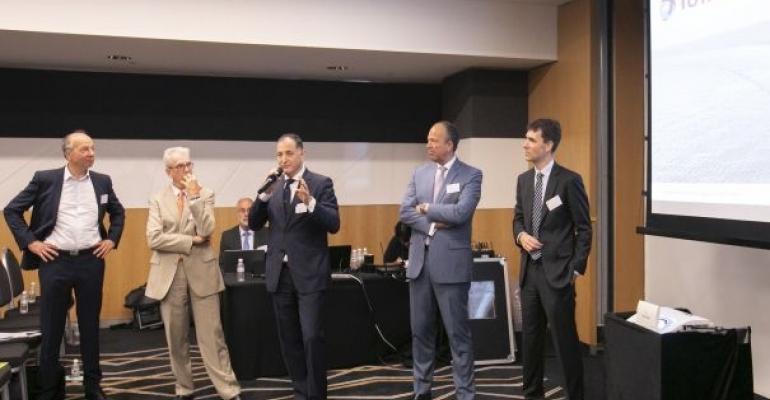Total Marine Fuels has prioritised Europe’s Amsterdam-Rotterdam-Antwerp (ARA) major bunkering hub, France, Germany and Singapore, the world’s largest bunkering port, for the supplies of IMO 2020-compliant marine fuels as early as from September or starting October, according to Jerome Leprince-Ringuet, managing director of Total Marine Fuels.
“We will have low sulphur fuels available for our current customer base and beyond. We have been working to ensure that in the major hubs that we operate – Europe, Asia and Africa – we will be able to supply compliant low sulphur fuels,” Leprince-Ringuet told Seatrade Maritime News.
“However we see the future of 2020 as a mix of solutions with not only low sulphur fuels but also high sulphur fuels and alternative fuels where we think LNG is a clear choice,” he said.
Total is looking at a production proportion of 75-85% low sulphur fuels, 10-20% high sulphur fuels and up to 5% LNG between 2020 to 2025.
“I’d caution that even if there’s availability of high sulphur fuels in future, owners who have chosen to use this fuel with scrubbers must know that in remote and smaller ports, the availability of storage, high sulphur fuel oil bunker barge and product itself are not guaranteed. The owners will need to secure the high sulphur fuels in advance,” Leprince-Ringuet said.
Read more: IMO 2020 - Majority of smaller bunkering ports won't have compliant fuel
And while the market share of LNG as fuel could still be the smallest at a projection of 5% by 2025, Leprince-Ringuet believes that the clean gas is the “best option for the future and the best option amongst all the alternative fuels”.
Total is currently developing LNG bunkering projects in Europe, the Middle East and Singapore, as the oil refiner is backing the emergence of LNG as fuel due to its sound “business case”, Leprince-Ringuet said.
He noted that CMA CGM, for instance, has chosen LNG-propulsion for their next generation of containerships, and a lot of passenger vessels, ferries and roros in Europe have turned to using LNG. The world’s major bunkering hubs are also promoting the use of LNG as fuel, and the price of LNG is expected to stay cheaper than marine gasoil.
“All these are examples of business case that works so we are very engaged in the development of the LNG bunkering market,” Leprince-Ringuet said.
Read more: Total signs agreement to fuel CMA CGM's 22,000 teu LNG-powered containerships
Total’s global network of marine lubricants supply, meanwhile, is expected to complement its low sulphur fuels supply come 2020.
Robert Joore, general manager of Total Lubrifiants, said Total is currently testing a new version of lubes to add to its already extensive portfolio of lubricants that are available in 100 countries in more than 1,000 ports.
“With the existing portfolio we have, in fact we are already prepared for 2020. But we are currently testing a new version of product in order to have a better product available and ready,” Joore said.
Jean-Philippe Roman, technical director of Total Lubrifiants, said that low BN (base number) lubes will become the most important product in its portfolio due to the 2020 Marpol Annex VI regulation. Total Lubrifiants is currently testing a new version of its BN 40 lubricants for use with low sulphur fuels. From 2020, Roman expects that Total Lubrifiants’ portfolio will be centred on the BN 40 product, shifting away from its current widely used BN 70 product.
“We are currently developing and testing the new version BN 40 product for 2020. However, engine manufacturers have pointed out some sensitivity on engines in terms of deposit formation, so we are recommending customers take a measured approach to the transition by using a higher BN of 57 that we already have in our portfolio,” Roman said.
“For LNG-fuelled engines or vessels continuously operating on 0.1% sulphur distillate fuels, we have developed a new BN 25 product. We will still supply the higher BN 100 product for use with high sulphur fuels and ships using scrubbers,” he added.
Read more: IMO 2020 - differing perspectives across shipping sectors
Copyright © 2024. All rights reserved. Seatrade, a trading name of Informa Markets (UK) Limited. Add Seatrade Maritime News to your Google News feed.


